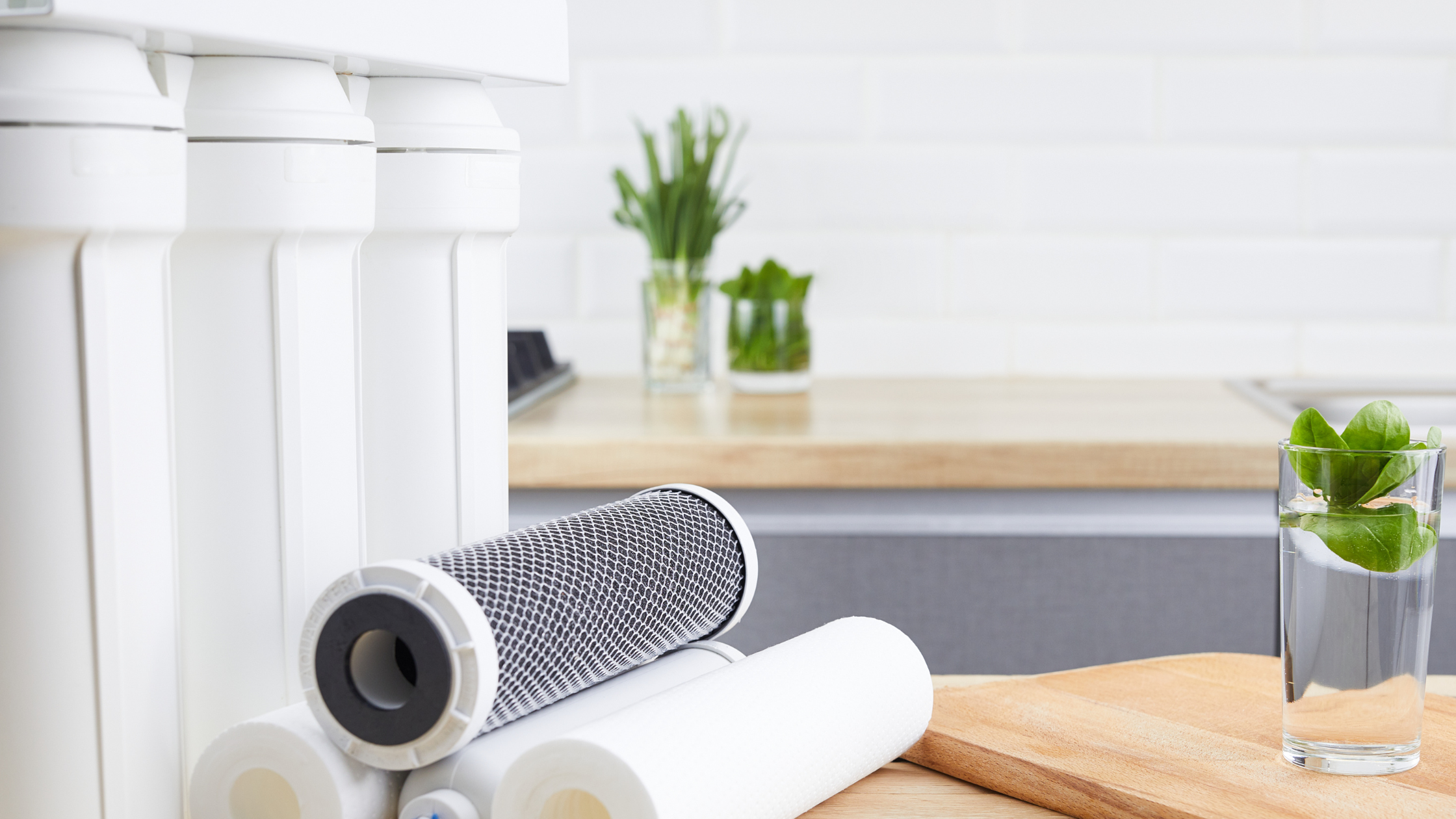What Is Reverse Osmosis?
Reverse osmosis, or RO, is a “…separation technique in which pressure applied to a solution forces the solvent through a semipermeable membrane from a region of low concentration to one of high concentration, leaving behind the solutes.” If the scientific definition is a bit overwhelming, think of it this way; reverse osmosis is a water filtration process that utilizes a partially permeable membrane to remove contaminants. The idea has been around for over a century and remains one of the more cost-effective filtration methods today. According to the FDA, reverse osmosis was not commercially viable until the early sixties. Advances in membrane technology paved the way for RO filtration today. [1]
What Is A Reverse Osmosis System?
A reverse osmosis system utilizes pressure and a semipermeable membrane to remove contaminants and foreign matter from water. Depending on the application, it typically includes a series of filters or stages, one being a semipermeable membrane. In most residential applications, an RO system for drinking water is installed under the sink or on top of the counter, while whole-home RO systems are commonly installed at the point of entry, such as in a garage or basement.
Where Is Reverse Osmosis Utilized?
- Residential
- Business
- Industrial
What Contaminants Does Reverse Osmosis Remove?
According to the CDC, Reverse Osmosis Systems are highly effective at removing common chemical contaminants, protozoa, bacteria, and viruses.
Common chemical contaminants (metal ions, aqueous salts):
- Sodium, chloride, copper, chromium, and lead; may reduce arsenic, fluoride, radium, sulfate, calcium, magnesium, potassium, nitrate, and phosphorous. [2]
Reverse Osmosis Systems have a very high effectiveness in removing:
- Protozoa (e.g., Cryptosporidium, Giardia)
- Bacteria (e.g., Campylobacter, Salmonella, Shigella, E. coli)
- Viruses (e.g., Enteric, Hepatitis A, Norovirus, and Rotavirus) [2]
Residential Applications
Point of Entry (POE)
Point of Entry systems are installed where the water source enters the building. For residential applications, this is often found in the garage or basement of the home.
Point of Use (POU)
Point of Use systems are installed in close proximity to where the water will be utilized. For residential applications, specifically for Reverse Osmosis, this is often found in the kitchen of the home.
Common Residential Applications
- Under The Sink
- Countertop
- Whole-home
Under The Sink – point of use system (POU)
The filters and storage tank are typically housed underneath the sink, with a dedicated spigot installed close to the main faucet. While it is not unheard of to install these systems in other areas, such as a garage or basement, this requires additional work and can introduce complications.
Countertop – point of use system (POU)
Countertop units are typically self-contained filtration without the use of a storage tank.
Whole Home – point of entry system (POE)
Whole home units contain similar components to their smaller counterparts but on a larger scale. The parts are oftentimes installed in the garage or basement of a home due to the location of the water source and the space needed to house the R.O. system.
Residential Uses For RO Systems
- Drinking water
- Whole-house filtration.
Drinking Water
For many households, drinking water is the primary reason to seek out reverse osmosis filtration. Whether a homeowner simply wants their water to taste better or they need to filter out harmful contaminants, RO point-of-use systems can handle a variety of needs. One of the most frequently seen residential applications includes the under-the-sink or countertop style. Countertop units are a great alternative in places such as rental homes or apartments where permanent installation is not an option. With a variety of options, from those with a storage tank under the sink to a tankless version for those with limited storage, RO systems are a great solution for clean drinking water.
Whole-home Filtration
Depending on the water source for the home, the contaminants in the water, and the needs of its occupants, a whole home system may be necessary. Overall, whole-home installations are typically less common due to the investment required to install and operate when compared to point-of-use systems seen in many kitchens.
What Are the Advantages Of RO Systems?
- Removes upward of 99.99% TDS(total dissolved solids) from drinking water
- Cost Savings VS Bottled Water
What Are the Disadvantages Of RO Systems?
- Increase in Waste Water
- Space Required for Installation
- Ongoing Maintenance Costs
What Are Some of the Challenges For RO Systems?
- Installation Whole-home installations require connecting to the main water source.
- Water Pressure – installing an RO system can decrease the overall water pressure in a home. Pumps can be added to improve water pressure, but these come at an additional cost.
- Upkeep – Owning an RO system comes with regular, ongoing maintenance for the home. This included changing filters and regularly testing the water.
- Storage Space – Installing RO systems, whether whole home or under the sink, requires space. The equipment for whole-home systems is larger in size than point-of-use systems found in kitchens and is typically located in a garage or basement. In some homes, space is at a premium, and this requirement can further complicate matters. For under-sink models, oftentimes space in this area is limited, and adding the necessary equipment can further reduce the amount of storage in this area.
What Is The Best Type Of RO System?
While it would be great to be able to point to one clear winner, this type of recommendation would be misleading. The answer to this question will vary depending on your family’s needs. Every home has different water needs based on a variety of factors. Some of these include the number of occupants, the water source, the contaminants in your home’s water, and the space available to set up the equipment. Since each home will have different variations of these factors, suggesting a one-size-fits-all answer would be a disservice to readers.
Sources:
1. Britannica, T. Editors of Encyclopedia (May 3, 2023). reverse osmosis. Encyclopedia Britannica. https://www.britannica.com/science/reverse-osmosis
2. Technical Information on Home Water Treatment Technologies | Home Water Treatment | Drinking Water | Healthy Water | CDC. (n.d.). https://www.cdc.gov/healthywater/drinking/home-water-treatment/household_water_treatment.html


